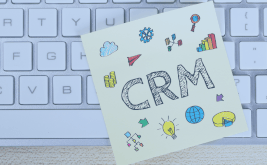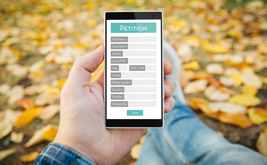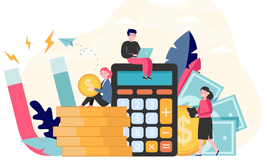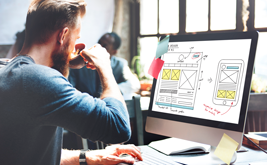Email newsletters in the sales funnel
Sales Funnel is an effective marketing tool for attracting leads, nurturing them and converting them into company customers. It represents a step-by-step strategy of promoting each lead to the target action: booking, sale, registration. To convert users into buyers, companies use tools such as lead generation, lead magnet on the site, social media ads, messenger messages, web push notifications, email newsletters, SMS, phone calls.
Depending on the number of communication channels you choose in your marketing strategy, sales funnels come in two types:
- mono-channel - involve a single method of communication, such as messenger only;
- omnichannel - involve a combination of two or more channels, such as chatbots, emails, SMS.
In this article you'll learn how to build a mono-channel sales funnel using email newsletters, which still have a high ROI and remain an effective way to communicate with your target audience. Proof of this is the constant growth of email users around the world. According to statistics their number is expected to reach 4.1 billion in 2021.
Let's learn more about why businesses need a sales funnel and what steps it consists of.
What steps does the sales funnel consist of
The sales funnel allows you to set up a continuous process of attracting leads and moving them toward a targeted action. It allows you to track the effectiveness of your marketing strategy and improve it based on the statistics you get. The sales funnel helps to see how many potential customers you managed to attract, and what percentage of them were converted into customers. Tracking the results at each stage of the sales funnel helps you identify weaknesses in your marketing strategy, better understand your target audience, think through segmentation options and estimate profit.
In all industries and job specifics, companies use the classic AIDA model to build their sales funnel, which has four stages:
- attention - attracting attention;
- interest-arouse interest;
- desire - cultivating desire;
- action - motivation to action.
While the AIDA model has four stages, there can be more in the sales funnel. This is because it may take more than one step to convince the user to go further.
Say you want to sell a $100 3D design training course. To motivate a customer to buy it, you need to tell them about the company, convince them of your expertise, and show them the benefits of the training. It is unlikely that someone will pay for the course as soon as they see the offer. Therefore, it is important to carefully think through the process of communication with the potential client and lead them step by step to the purchase. Let's look at what a sales funnel model for promoting a training course might look like.
- Capture attention.The lead magnet on the site or the landing page offering the free book and checklist for learning 3D design.
- Promotion of interest. Welcome email series. An email with a book and a checklist offering you two additional free video lessons. Mailing list with the first lesson. Second lesson email, and a short quiz to get personalized training materials.
- Wish Cultivation Newsletter with a tutorial. In this mailing, the subscriber is invited to book participation in the program. To increase the desire, the newsletter is supplemented with testimonials from students and their success stories after completing the course.
- Motivation to Action To get the customer to take the targeted action, they are offered a gift. This can be a free additional video lesson, a consultation in the form of an online meeting, a discount, and more.
In this model, you see that in the second stage, you send three emails to the potential customer, each of which should be interesting to the user and encourage them to open the next newsletter. In order to improve the effectiveness of your sales funnel scenario, it's important to have different options.
For example, if the subscriber has not opened the email, you can set up a newsletter that is unread. If the customer has booked in but has not paid, you need to remind them to pay. Remember, customers can drop out at any stage of the sales funnel for any number of reasons, so it's important to follow up with those users and get them back into your funnel.
Let's now look at a different model for selling a 3D design training course.
- Lead magnet with an offer to participate in a free webinar on 3D design for beginners.
- Series of letters. A mailing confirming participation in the webinar. A reminder letter about the webinar on X-day. A mailing after the webinar inviting you to take the test and receiving recommendations for further study.
- Mail with test results and offer to register for the training course at a discounted price for webinar participants.
- A mailing list with student success stories and a reminder of the limited time offer.
- A mailing list with student success stories and a reminder of the limited time offer.
You can use different sales funnel models to achieve the same goal. The number of stages in it depends mostly on your company's goals and capabilities, your potential customer profile, the cost of the product and other factors.
Less you'll find real-world examples of how email lists can be used to nurture leads and convert them into customers.
Examples of Sales Funnel Models Using Email Newsletters
Sales funnels are used across industries. They are used by online retailers, online entrepreneurs, travel agencies, educational companies, streaming services, veterinarian clinics, hotels and restaurants.
You can see the lead magnet with a free sample day of the WOWBODY slim program below.
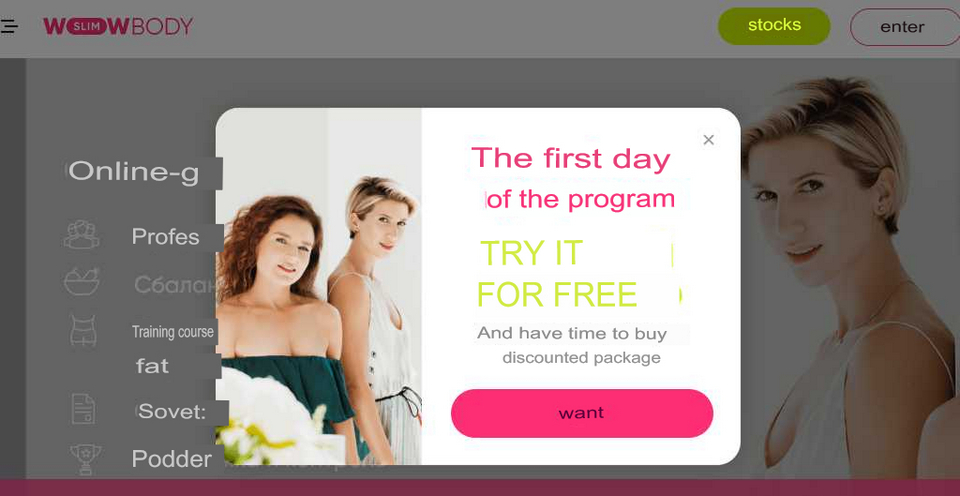
After signing up for the program, the potential customer is sent an email confirming the email address.

Subscribers are then told that the test day has started and they can start exercising.
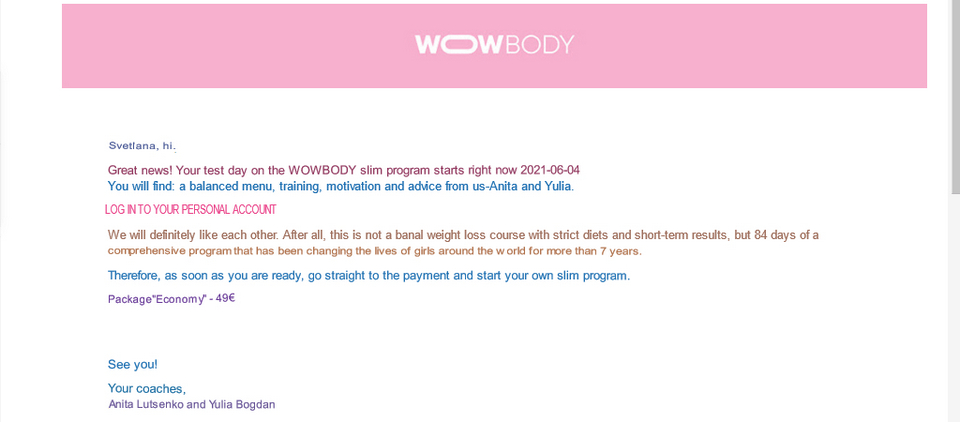
The third newsletter reminds the potential customer about the end of the test period and asks for feedback.
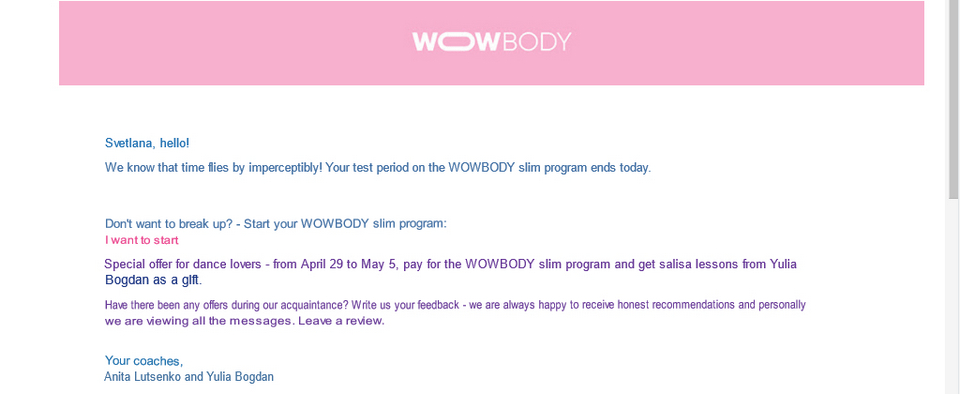
If the user is still undecided and in no hurry to pay for the full course, they are sent a motivational video with a clear call to action. This mailing actively uses triggers in the form of words of encouragement to encourage a decision. They add social media buttons at the end of the email to create extra touchpoints with subscribers and keep them engaged even if they stop opening the emails.
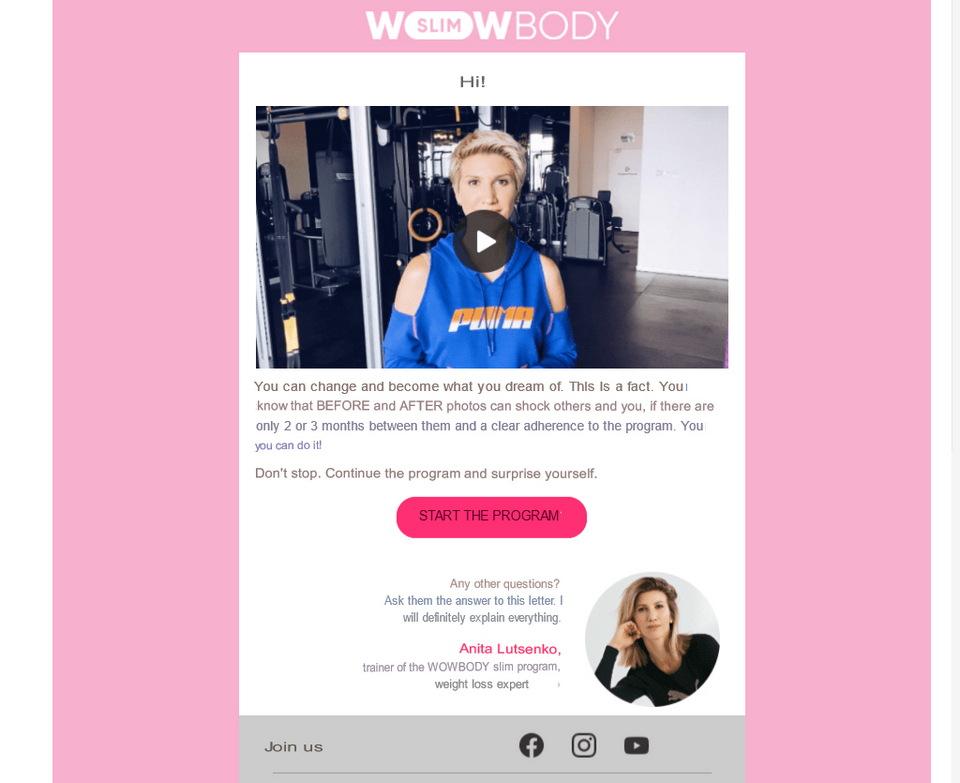
Furthermore, the potential buyer continues to be motivated to pay for the course. To do so, he is offered the trainer's help in choosing a program and videos of the effectiveness of the workouts.
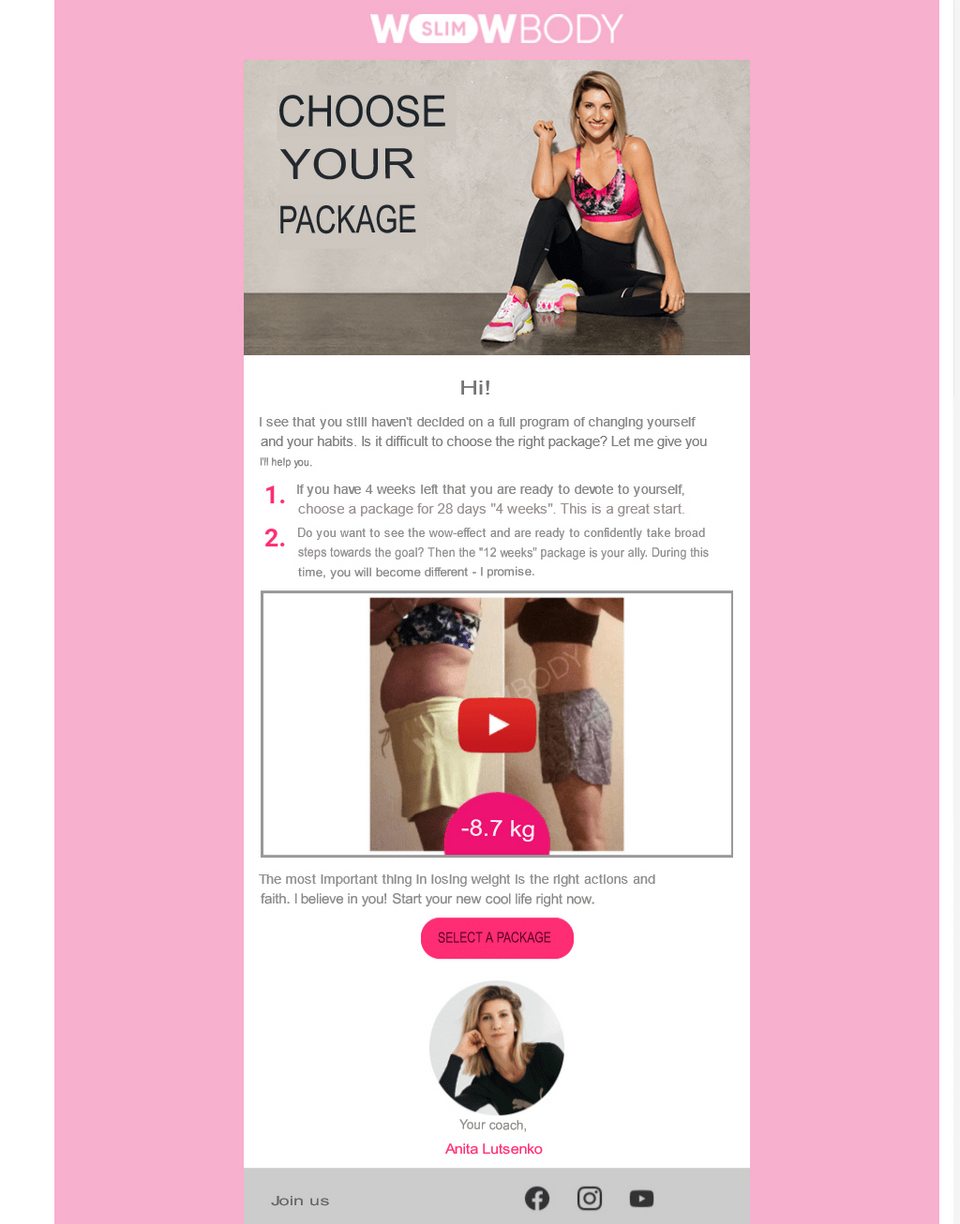
A discount is used as additional motivation to make a decision.
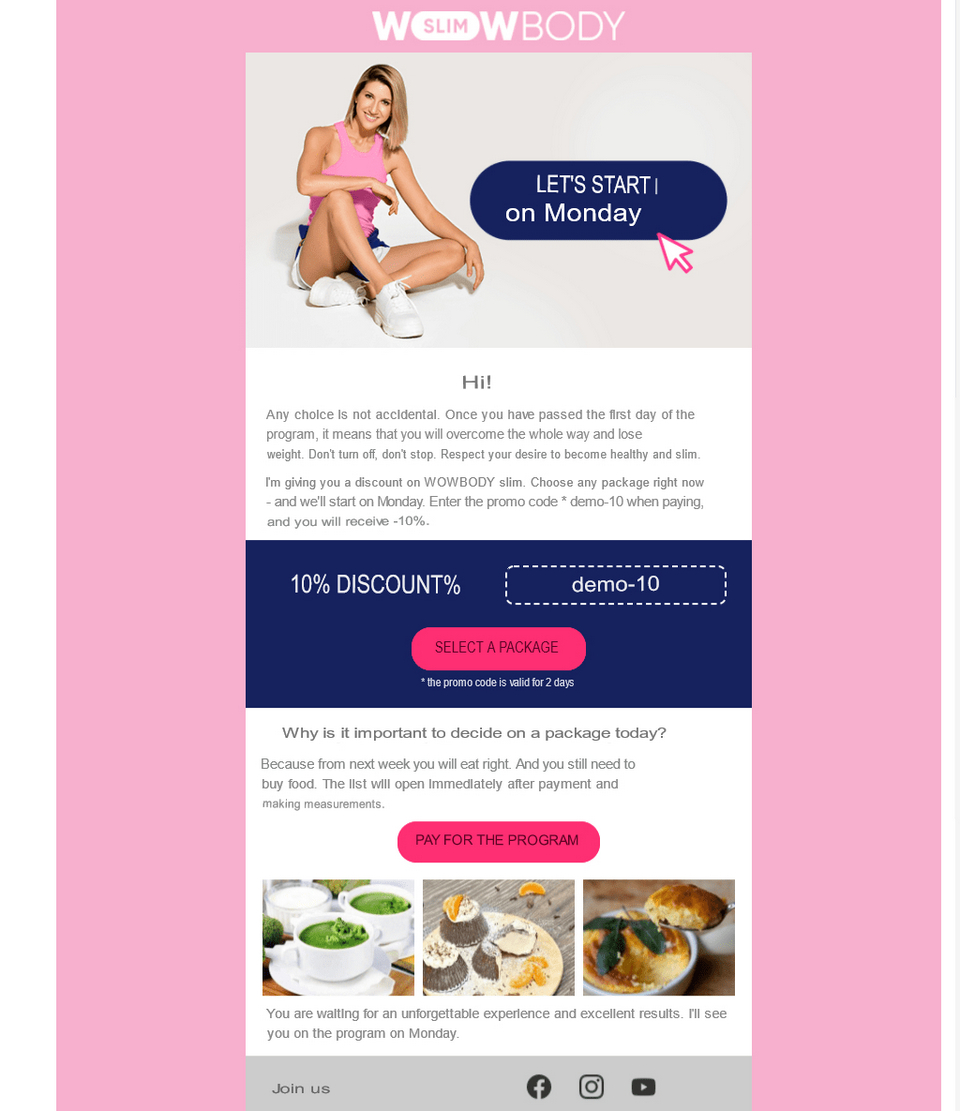
Now, let's look at another sales funnel using email newsletters. In this example, we'll look at how Igor Jazov uses a webinar to sell a UI/UX Designer training course. After a potential customer has registered for a webinar, on X day he receives an email reminding him about the event. This newsletter also gives the user a bonus in the form of a free book.
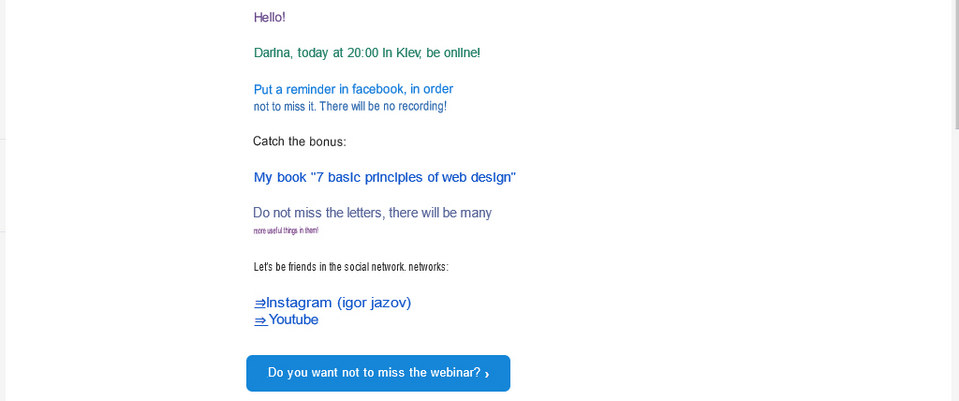
To make sure a participant attends the webinar, that same day, about an hour before the webinar, they get another email telling them about the answers they can get if they watch the live stream all the way through.
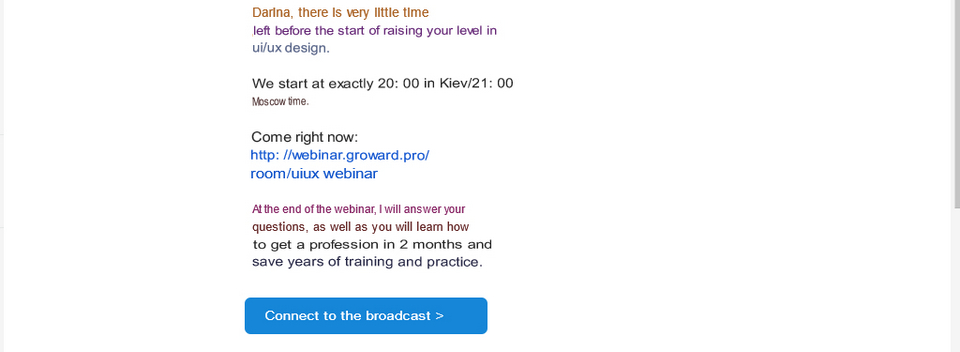
The next day, they send a newsletter to the webinar participants announcing the launch of a series of tutorial videos to study interface design.
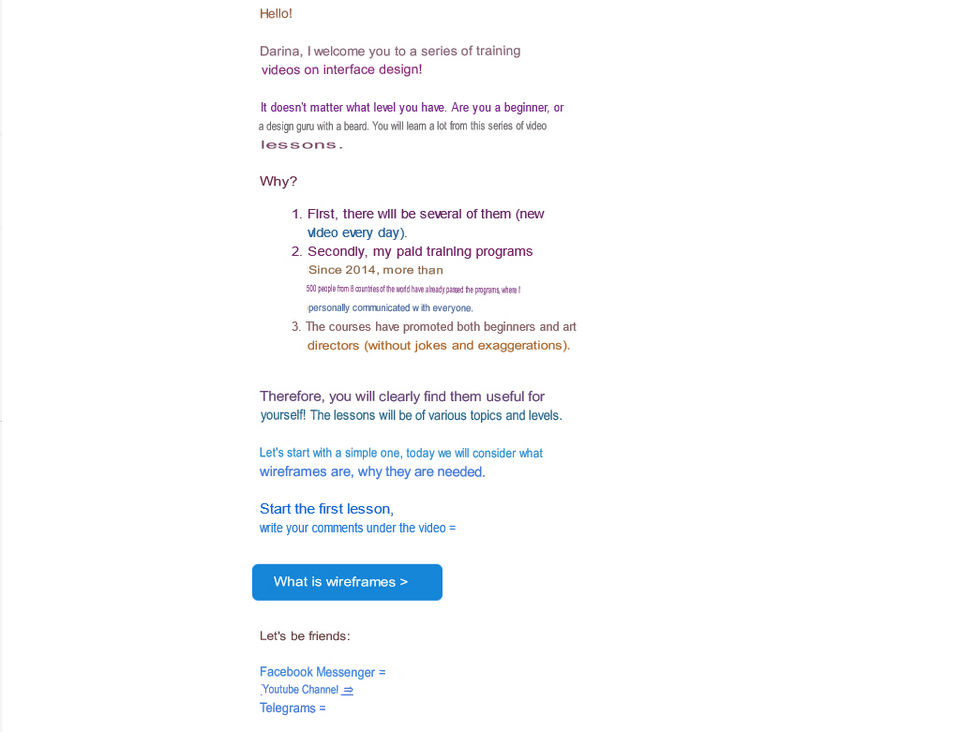
After sending the lessons in four emails that come in daily, a potential client is invited to become a participant in a two-month "UI/UX Designer" course. To motivate the decision, the email uses a $200 discount with a promo code. Such an offer encourages a sense of lost profits in subscribers, which boosts sales.
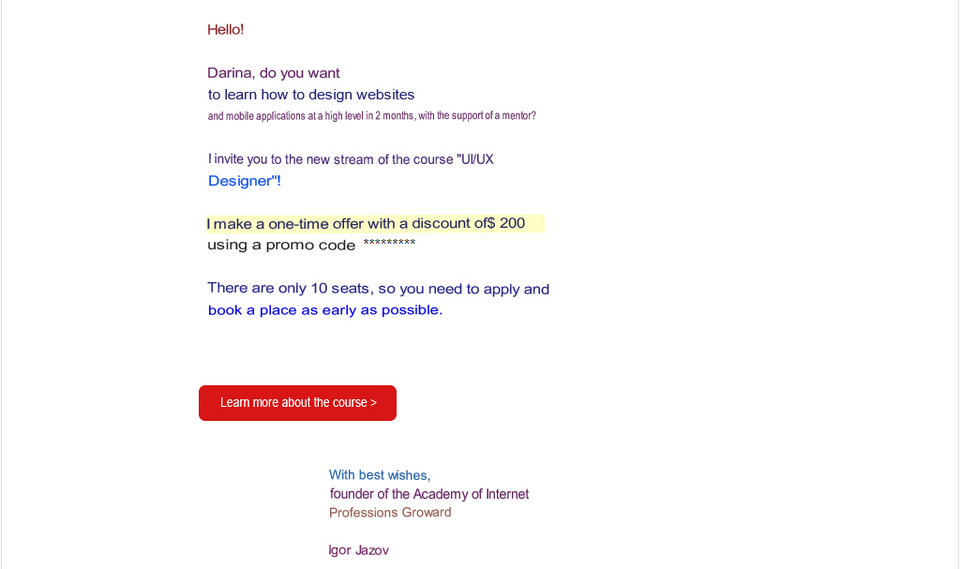
To better understand how to create your own sales funnel using email newsletters and where to start scripting, follow the instructions below.
How to develop a sales funnel script
First of all, you need to study your target audience. Analyze their pains, interests, needs and desires. Develop a detailed portrait of your customer to see who your customer is, what they are into, where they live, and what channels of communication they prefer to use.
Next, analyze the customer journey map (CJM) to see how customers are looking for your product, what data they are interested in, and what influences their decision. From this CJM you will be able to identify the best places to grab leads' attention and the triggers to drive action.
When you have all the information you need, start scripting.
- Determine where and how to attract leads' attention. This could be a lead magnet on a landing page, a pop-up on a website, or an ad in a social networking site. You can use a webinar, book, consultation, discount or other gift to get the email address of the potential customer. Rely on your goals, the specifics of the company, and the profile of the customer.
- Create a chain of letters. Consider the registration confirmation letter and the content of the following mailings. If your goal is to sell a high-value product, research your customers' FAQs and fears. Prepare a series of newsletters that communicate your story and defeat any objections.
- Consider different scenarios. The client can, for whatever reason, skip the email, open it but not click the link, register but not pay. Think about what that might entail and prepare those emails accordingly.
- Segment your subscribers. Some customers might pay after their first email, others might pay after their third. Since customers won't always follow your script, think about ways to segment them so each subscriber gets relevant emails. That way, those who have paid will not receive a "buy this product" email, and those who haven't will receive a "thank you" email.
There are helpful tips to help you build your sales funnel and further improve its effectiveness step by step.
Tips for Building a Sales Funnel
Unfortunately, there is no single sales funnel model. Its scenario depends on a number of factors. However, you can take note of the recommendations below to create an effective sales funnel and make it easier to manage leads at each stage in it.
- Consider carefully the lead magnet or capture form. There are no little things during their design, because that's where the customer's journey in the sales funnel begins. Consider the look, color, number of fields, call to action and other elements. Remember that the more complex the subscription form is, the less users will leave their email address in spite of the gift or bonus.
- Use a CRM system. It will help you track the number of customers at each stage of the sales funnel, analyze the history of interactions and return users with additional mailings. A CRM system allows you to identify and fix problems in the way of customers in time to convert them into buyers.
- Regularly track stats and find weaknesses. Analyzing the results helps you understand which parts of the strategy need tweaking. Keep track of how many leads entered the funnel, what percentage made it to the halfway point, how many eventually converted to customers. Analyze the timing of each stage to see where customers stay the longest and why they drop out.
- Step by step, refine your sales funnel. Don't try to create a complex, multi-level funnel the first time around. It's better to start with a simple one and refine it gradually. Reduce the time it takes to go through the sales funnel, increase conversion rates, and reduce the percentage of users who drop out.
- Communicate with customers after the purchase. Continue to engage with customers through newsletters, foster an emotional connection, build ongoing relationships and increase loyalty.
To improve your marketing funnel, track the effectiveness of each individual change in a single test. This way you can see the effectiveness of your decisions and assess their impact on subsequent steps. Regularly track statistics, improve KPI's, reduce time to go through the sales funnel, improve lead segmentation and then your marketing efforts will generate the desired returns.

